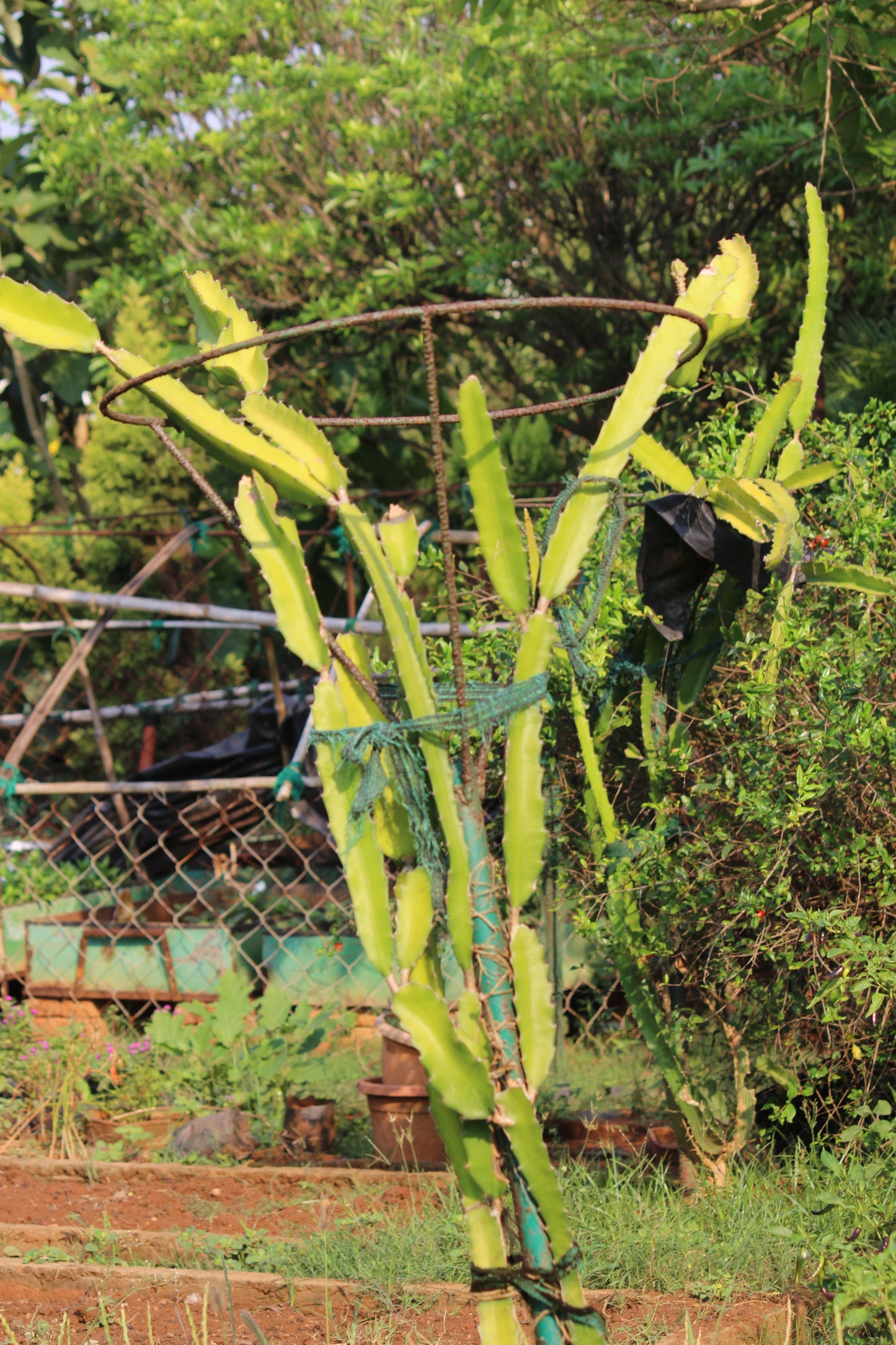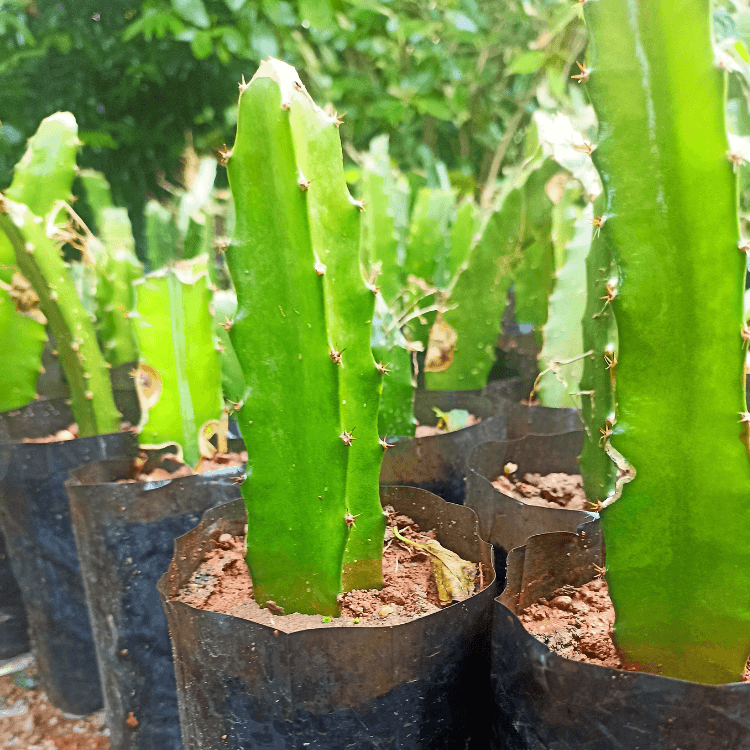agriyumfood
Dragon Fruit Saplings
Dragon Fruit Saplings
Couldn't load pickup availability
A rare, tropical fruit known as dragon fruit (sometimes referred to as pitaya) is one that you have probably seen in stores before. Similar to a kiwi, but much less subdued in flavor The flowers on the dragon fruit, which is actually a cactus, are some of the biggest and most spectacular in the entire world. In tropical and subtropical climes,dragon fruit—which is native to Central America—is most frequently grown.
PLANTING INSTRUCTION
- Select a container that is 24 inches broad and at least 10 inches deep. This is comparable to a 10-gallon pot. Because pitaya, commonly known as dragon fruit, is a vining cactus, your container must have strong support. If not, the cactus will spread out along the ground until it finds something to climb, growing over the sides of your container.
- Make sure to utilize cactus-specific soil that is sandy and well-draining. If your container does not already have a number of drain holes, you will need to add them so that the plant roots never get wet.
- For your dragon fruit plant, choose a sunny site, a minimum of 6–8 hours of sunlight. In excessively warm conditions, the plant may even need some shade, though it can withstand moderate shade.
- Keep in mind that your dragon fruit will be harmed by temperatures above 100 degrees Fahrenheit.
- If you overwater your dragon fruit, it will die. Give the plant a little mist or drip when the soil is dry but it isn’t withering. For these plants, a drip line or an overhead mister works nicely.
- Installing a drip line and connecting it to your containers center support can help you do this. Put the drip nozzle on the support line's top end, and let it trickle down the pole. This is the best method for watering your dragon fruit.
DRAGON FRUIT DISEASES AND PESTS
In most cases, the dragon fruit is not significantly harmed by pests or diseases, but keep an eye out for aphids. Aphids typically feed on developing buds and shoots. Additionally, take care not to overwater the dragon fruit plant as this can lead to both root and fruit rot.
FERTILIZER FOR PLANTATIONS OF DRAGON FRUIT
Use a balanced fertilizer once a month to fertilize during the plant's growing season. Winter fertilization should be avoided if growing in a cooler climate. To keep moisture inside, side dress with compost or old manure.
HARVESTING OF DRAGON FRUIT
- Once the dragon fruit is bright green skin turns red or pink, you can pick it.
- Fruits should have an oval shape and measure 10 to 15 centimetres in length.
- 30–50 days after flowering, fruits should be available for harvest.
- Dragon fruit can be grown from the summer through the late autumn and even into the winter in a typical growing environment.
- Dragon fruit can be picked in temperate areas between the summer and early to mid-autumn.
- The first or second year after planting is when the dragon fruit plant will begin to bloom.










